The most widely applied battery cooling system in battery packs is the liquid cooling solution. The core component of the liquid cooling solution is the liquid cold plate. An important factor driving the continuous iteration and development of liquid cold plates is improving thermal conductivity. There are generally several approaches to enhancing thermal conductivity:
1. Improving the Thermal Conductivity of the liquid cold plate Material
The most common materials used for liquid cold plates are aluminum alloys and copper metals. Copper offers better thermal conductivity, but it is significantly more expensive. Therefore, aluminum alloys are primarily used in passenger vehicle battery packs.
2. Improving the Thermal Conductivity at the Interface between the liquid cold plate and the Battery Cells
The diagram below illustrates the connection between the battery cells, module, and liquid cold plate in a CMP (Cell-Module to Pack) battery pack. The connection path can be summarized as follows: cell → blue structural thermal conductive adhesive → module casing → pink thermal conductive adhesive → PACK lower housing → structural thermal conductive adhesive → liquid cold plate. This path involves three layers of thermal conductive adhesive. To improve the thermal conductivity at the interface, efforts are focused on the Thermal Interface Materials (TIMs). TIMs have evolved from air gaps, to thermal pads, and now to thermal conductive adhesives, continuously improving thermal conductivity.

3. Adjusting the Flow Channel Design to Increase the Contact Area between the liquid cold plate and the Battery Cells and Enhance the Heat Transfer Efficiency of the Fluid
The most commonly used flow channel design for liquid cold plates involves the profile + welding approach. Flow channel forming processes can be divided into the following two types:
- Harmonica Tube Design: This method uses extrusion processes to directly form the flow channels in the liquid cold plate, followed by machining to create circulation pathways, and finally sealing with friction welding, brazing, or other welding techniques. This process has high production efficiency and low cost but lacks structural flexibility and requires additional metal tubing, leading to relatively lower space utilization.
- Stamping Flow Channel Design: In contrast to the harmonica tube design, the cooling plate is directly formed through stamping and then sealed through welding. Although this design is more expensive, it offers higher integration efficiency and better consistency.
4. Different Layout Schemes for liquid cold plates
Depending on the layout position, there are side cooling and bottom (top) cooling for the battery cells. Below are some practical examples to illustrate:
-Side Cooling of Battery Cells: Examples include Tesla Model S, GM Volt, and CATL’s Kirin Battery:
-The Model S uses a serial flow channel design with the liquid cold plate installed in the battery gaps, ensuring each cylindrical cell contacts the liquid cold plate directly. However, the serpentine cooling plate significantly increases the pressure loss in the liquid cooling system.
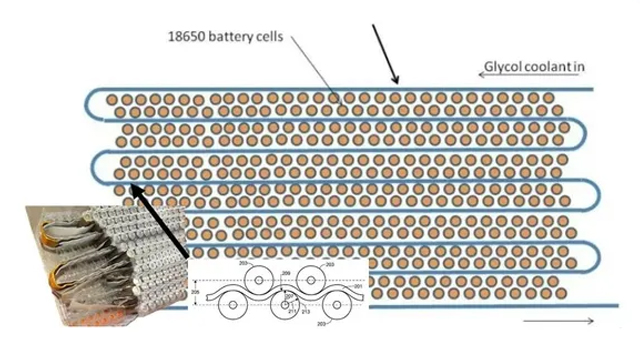
-Compared to the Model S, the Volt uses a parallel plate structure with a cooling water plate placed between two soft-pack cells, making it more compact and slightly better in cooling performance.
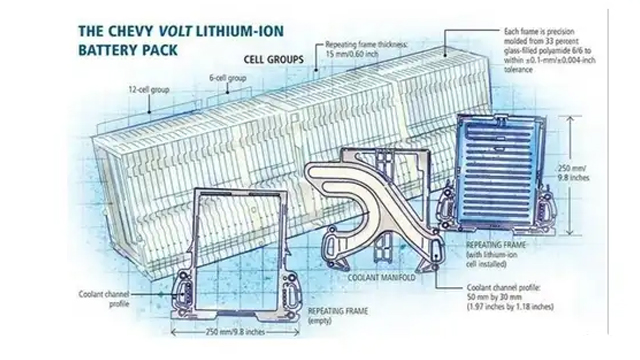
-The Kirin battery pack cooling relies on a component called a multifunctional elastic layer. This component combines harmonica tubes with water pipes, replacing the insulating pads, liquid cold plates, and cross beams in CTP2.0 (Cell To Pack). Structurally, the multifunctional elastic layer resembles corrugated cardboard, allowing it to expand and contract with cell breathing while also serving as a structural component to enhance the battery pack’s strength. Additionally, the longitudinal liquid cold plate in the harmonica tube design isolates each cell, providing four times the cooling area compared to bottom cooling.
- Bottom (Top) Cooling of Battery Cells: Example includes Porsche Taycan:
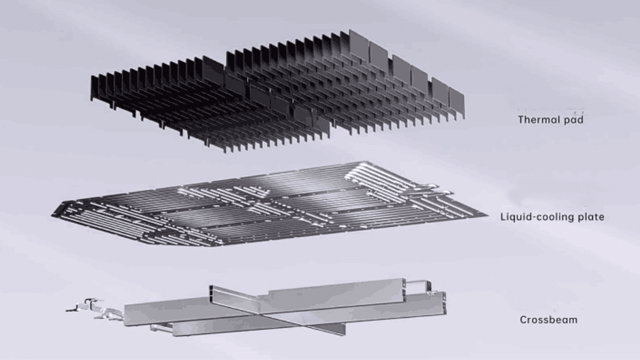
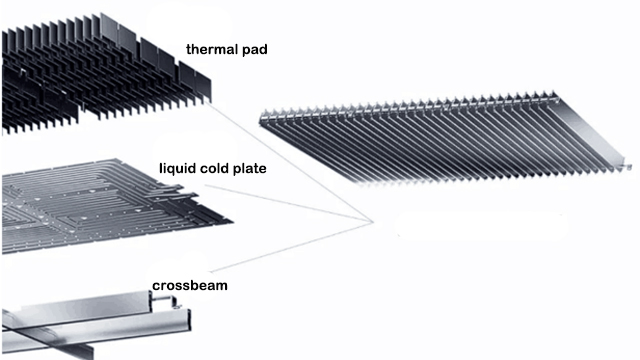
- The Taycan’s module layout is divided into upper and lower layers, so its liquid cooling system is also divided into upper and lower layers, with a total of 13 cooling branches. The entire liquid cold plate is bonded to the lower housing with structural thermal conductive adhesive. Each cooling branch has two parallel water cooling pipes, using the harmonica tube design. The cross-sectional view of the cooling pipes shows that each pipe has 10 parallel flow channels, each 3mm x 2mm in size. The overall thickness of each pipe is about 4mm, with a width of about 35mm.

The above describes the liquid cold plates used in liquid cooling solutions for battery packs. If you are interested in further discussions, please contact us.
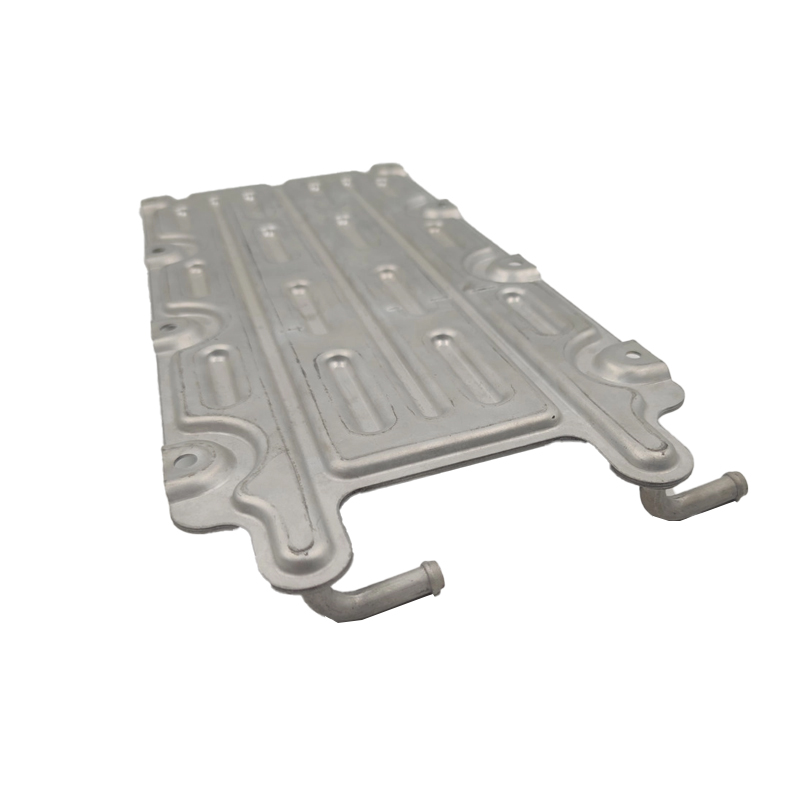
Lorithermal is a company that integrates the research and development, design, manufacturing, and sales of thermal management products. We specialize in the research, production, and technical service of high-power cooling solutions. The company boasts a research and development team with extensive experience in the field of thermal management, dedicated to developing cooling products and has obtained several national invention and utility model patents. Our main products include vacuum brazed liquid cold plates, friction welding liquid cold plates, and embedded pipe liquid cold plates, offering customers comprehensive services from cooling solution design to product supply.
Lori's liquid cold plates are widely used in fields such as new energy vehicles, aerospace, SVG, energy conservation and environmental protection, communication equipment, LED lighting, computing, medical equipment, servers, photovoltaic inverters, lasers, and control cabinets. Contact us to customize your liquid cold plate!












